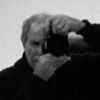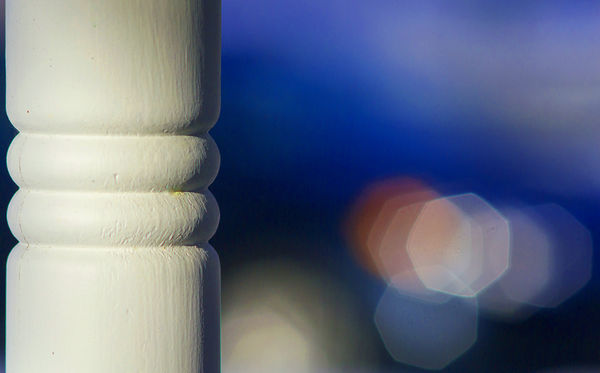Bokeh photos
Mar 17, 2017 16:46:38 #
kymarto wrote:
The Trioplan has been expensive for a long time, c... (show quote)
Your posts are worthy of a "What is Bokeh" post in the FYI section. (please!!!)
Awesome examples.
Mar 17, 2017 16:56:38 #
RichardTaylor wrote:
F1.8 may be the maximum aperure - you should be able to set it to smaller apertures, like f8.
Try putting your camera into aperure priority.
Here are a couple of examples from my archives - notice the out of focus highlights.
Try putting your camera into aperure priority.
Here are a couple of examples from my archives - notice the out of focus highlights.
Great examples. This helps me as well.
Thank you.
Mar 17, 2017 17:49:44 #
bnsf wrote:
Thank you will try this. Will post my photos when the turn out. Again thanks for alk your help. Greatly appreciated.
bnsf, good to see you are exploring the world of DoF, OOF, and Bokeh.
You've had some excellent examples of what to strive for and many different looks.
Though most would not consider a 35mm lens to be a great OOF/Bokeh lens, one needs to understand a few more basic principles to plan their Bokeh shots.
1, All lenses produce their Minimum DoF at their Minimum Focus Distance(mfd).
2, all lenses of the same aperture, regardless of their length, will produce the same DoF at their mfd, but varying slightly because of lens design.
3, depending on design a lens generally has a Minimum Focus Distance(mfd) relative to the focul length of other lenses. A 50mm lens has 1/4 the mfd of a 200mm lens, depending on design.
This isn't meant to sound complicated.
For example, if your 35mm lens has a mfd of 1 foot, then a 200mm lens has a mfd of about 5 1/2 feet.
That means that to produce the same DoF, you have to be 1 foot away from your subject but with a longer lens you can be considerably farther away, making the working distance to the subject much more comfortable, hence why longer lenses are often preferred for portraits(yes, along with less distortion).
Shorter lenses reach their Hyperfocul Distance at a much closer distance so it's more difficult to produce nice Bokeh with farther subject to camera distances.
Anyway, have fun playing with the Bokeh of your lens!
SS
Mar 17, 2017 19:31:33 #
bnsf wrote:
Has anyone took photos using the Bokeh method? I would like to learn how to accomplish this. Am use a Sony DT 35mm f1.8 l have used S shutter and used every speed available and could not accomplish this. How do you det up the camera to accomplish this effect?
Thank You.
Thank You.
Use aperture mode.
Mar 17, 2017 19:59:03 #
I thought bokeh was not just out of focus areas but reflections of out of focus light in the shape of the lens as well.
Mar 17, 2017 20:15:09 #
There are so many factors that determine bokeh and the look rendered by each lens. The aperture, spherical aberration, number of aperture blades and of course the quality of the glass. There are as many types of bokeh as there are lenses. Some claim the king of bokeh is the Leica 50mm f.95 Noctilux. You can argue the virtues of every lens and never come to any conclusion.
Mar 17, 2017 20:29:07 #
Apaflo wrote:
A very good example. Of very horrible bokeh.



Mar 17, 2017 20:56:09 #
Just one additional point that I think is worth adding; Bokeh is the "Quality" of the out of focus areas. To use this term correctly one really has to add an adjective describing the bokeh. To say a photo "has bokeh" is much like saying "this soup has flavour" without saying whether the flavour is good, bad or disgusting. So the evaluation of bokeh is largely a personal opinion as to whether it is good, bad or disgusting. Bokeh should enhance the image, or at least not detract from it by adding unsightly distractions. It is often described as "smooth", "creamy" or, conversely, "jarring", "distracting", or "glaring". Which adjective you use is largely a matter of taste. I, for example, do not like blurry backgrounds which contain bright globs the same shape as the aperture. I much prefer smooth bokeh which enhances the main subject by repeating some of the colours or introducing complementary colours. Foregoing posts have provided ample clues on how to get blurry background, the artist in you will determine if it is good or bad bokeh.
Mar 17, 2017 21:21:15 #
I disagree with your interpretation of the word "quality". Quality can have two definitions. I believe you are using it as "the standard of something as measured against other things of a similar kind; the degree of excellence of something." But in the definition of bokeh I believe it is defined as the second meaning "a distinctive attribute or characteristic possessed by someone or something." As such there is no value judgement attached to the definition of bokeh. The type of bokeh you don't care for has been described as "coarse bokeh" in wikipedia, with the attached example. One man's bad is another man's good.
mcveed wrote:
Just one additional point that I think is worth ad... (show quote)
Mar 17, 2017 21:22:59 #
bnsf wrote:
Please do. How do l begin to do this. Open lens when l have a fixed,f stop of 1.8? Dont understand.
The lens is not a fixed f/ stop. It has a range of f/22 to f/1.8. For defocusing the background you want the lower number (larger aperture).
Mar 17, 2017 22:50:12 #
Bobspez wrote:
I disagree with your interpretation of the word &q... (show quote)
I accept that you use a different definition than I do. I just don't see how you could use the word bokeh in a sentence with your definition.
Mar 17, 2017 23:12:09 #
Bobspez wrote:
I disagree with your interpretation of the word &q... (show quote)
Yes, I would agree. Quality as a "standard of excellence" does not apply to bokeh. Is an apple a higher quality fruit than an orange? Some people might prefer one or the other, but the concept of one being better than the other in a general sense does not apply.
Many modern test sites, for instance, define bokeh as good if it is diffuse and nondescript, but this goes exactly contrary to what many bokeh photographers prefer. They are willing to pay thousands of dollars for lenses that create exactly the opposite--bokeh that those aforementioned test sites would characterize as "rough" and "nervous".
It is possible to quantify other parameters of lens performance, such as sharpness expressed in lines/mm, or various aberrations expressed as percentages, and make a judgement of quality based on those figures, but bokeh eludes such definition. One might ask if Picasso was a higher quality artist than Rembrandt. How does one arrive at such a judgment?
Mar 17, 2017 23:52:41 #
kymarto wrote:
Yes, I would agree. Quality as a "standard of... (show quote)
Exactly. That is why I made the point that terms such as good and bad are value judgements which vary from person to person. The "quality" I was referring to is not a relative quality on a scale from terrible to excellent. The quality I was referring to in a non-judgemental quality such as smooth, creamy etc. Whether creamy is good or bad is a value judgement. Whether the bokeh is complementary to the subject and the mood of the image is also a value judgement. But to say a photo has bokeh is no more meaningful than saying the background is blurry.
Mar 18, 2017 00:05:27 #
Mar 18, 2017 11:45:20 #
Batman wrote:
PLEASE see "The Golden Rule".
Batman
Batman
Please take your holier-than-thou attitude and preaching back to the Attic.
There is nothing in my comments or those of the honorable speters that is incorrect.
You have consistently demonstrated, in The Attic of course, your insecurity and unwillingness to accept others' views. We don't need that here.
If you want to reply, then register here. Registration is free and your account is created instantly, so you can post right away.










